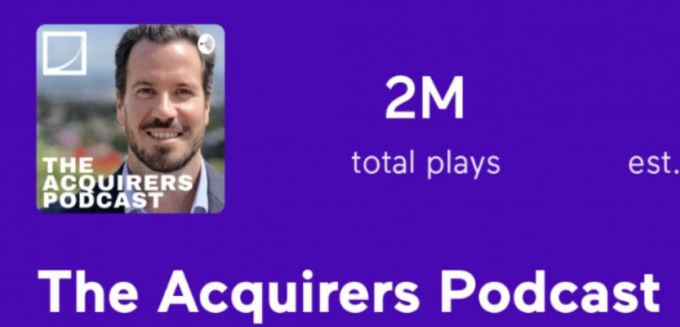During his recent interview on The Acquirers Podcast with Tobias, Gary Mishuris, Managing Partner of Silver Ring Value Partners discussed Weeding Out Investments Using The “Kill Step”. Here’s an excerpt from the interview:
Mishuris: The second step is the kill step where I’m trying to find if there’s anything wrong with it all based on my process, I’m going to kill it. The argument being that, if there’s something that’s going to cause me to say no after a lot of work, it’s better to say no without doing a lot of work. So, I’m looking for reasons to exclude. As I’m going through this process, now usually, there’s a couple of plus stocks at the top of the funnel, very loose. An investor I respect buys it, goes into the top. By the way, I erase the source. I don’t remember, which are the four streams the ideas came from, because I don’t want to be biased. Okay, Warren Buffett bought this. So, therefore, I’m going to give this greater respect than something else. Once something is in the funnel, it doesn’t matter where it came from.
Then there’s the kill step, and after the kill step, I usually am left with about 15 to 20 investments. So, maybe 10% of the initial universe remains. Then, what I do is I probably spend maybe 30 minutes to an hour on each company, so I’m progressively deepening. I’m a CS junkie from MIT. So, So, I remember from my AI class, you can go all the way down the decision tree to the leaf and come up or you can progressively deepen to one level, exhaust all.
That’s what I’m doing here, I’m progressively deepening, and I’m saying, “Okay, let me read the presentation. Let me maybe read the transcript,” something like that, and “Let me look up the proxy and see what the management incentives are,” and I’m reading the companies on four things. I’m reading them on business, people in balance sheet, but also complexity. Meaning, complexity, not of the company but of the potential thesis, how complicated will it be for me to figure out the last mile of whether it’s actually a good investment or not?
So, what I tend to do is I tend to rank things by– among things that pass, I rank them one through five, one, being the most actionable. Four and five is random, because once something is below a three, it really doesn’t matter. I don’t short, so I’m not looking for symmetry. But usually, on my second pass, some of the companies that were a two on the second category become a three on further examination, that eliminates some of 15 to 20. Others just get a pretty high complexity rating. It’s kind of lukewarm attractiveness, plus it’s pretty complicated. So, let’s do prioritize that.
I usually get two or three, where– I like to work on two things in parallel, because sometimes you get stocks, sometimes let’s say you’re scheduling a call or trying to do a primary research call, and just get stuck with someone’s schedule. So, doing a couple at a time allows me– at that point, I put it through my five-step research process.
You can find out more about Tobias’ podcast here – The Acquirers Podcast. You can also listen to the podcast on your favorite podcast platforms here:
For all the latest news and podcasts, join our free newsletter here.
Don’t forget to check out our FREE Large Cap 1000 – Stock Screener, here at The Acquirer’s Multiple:




